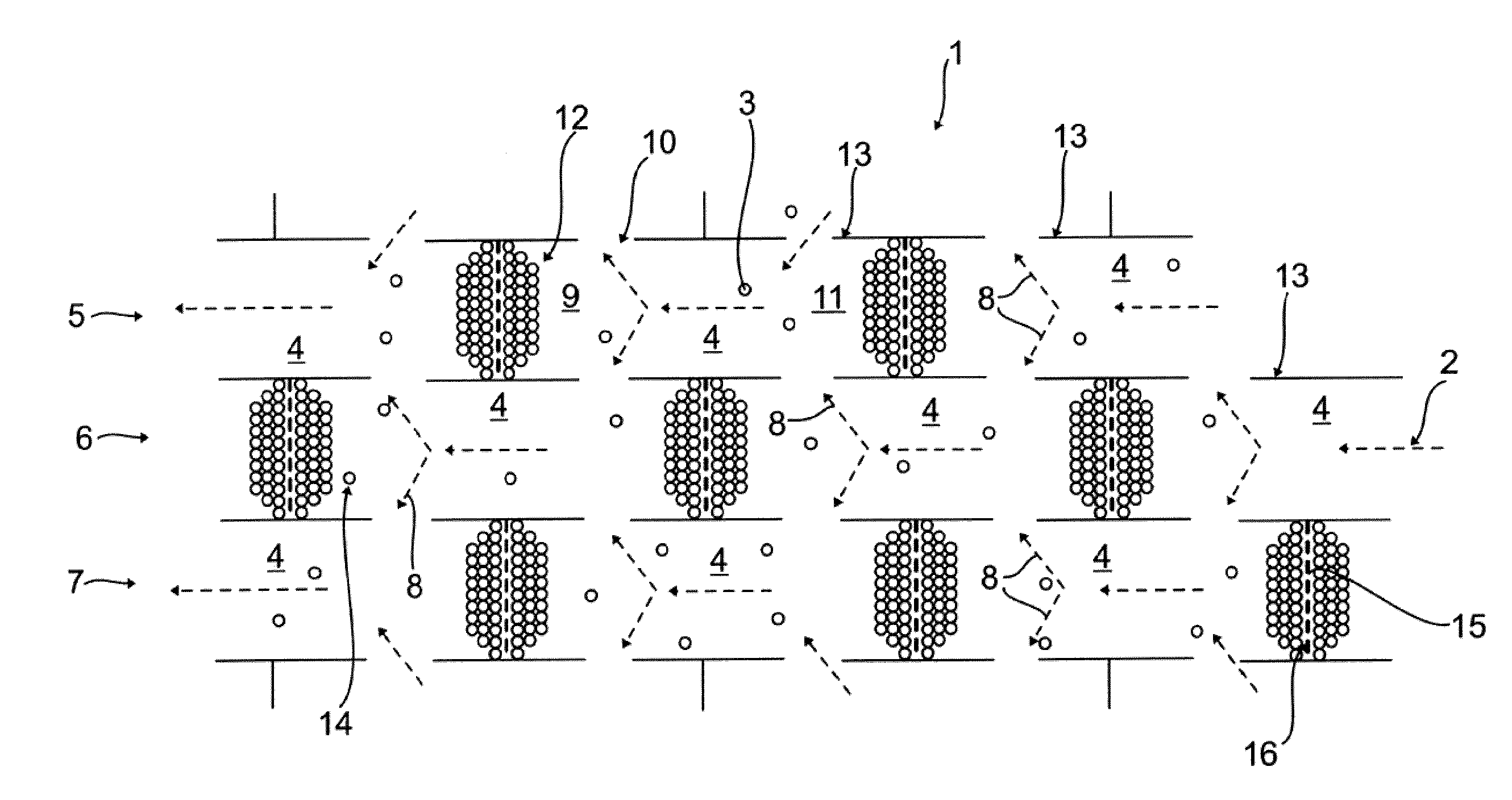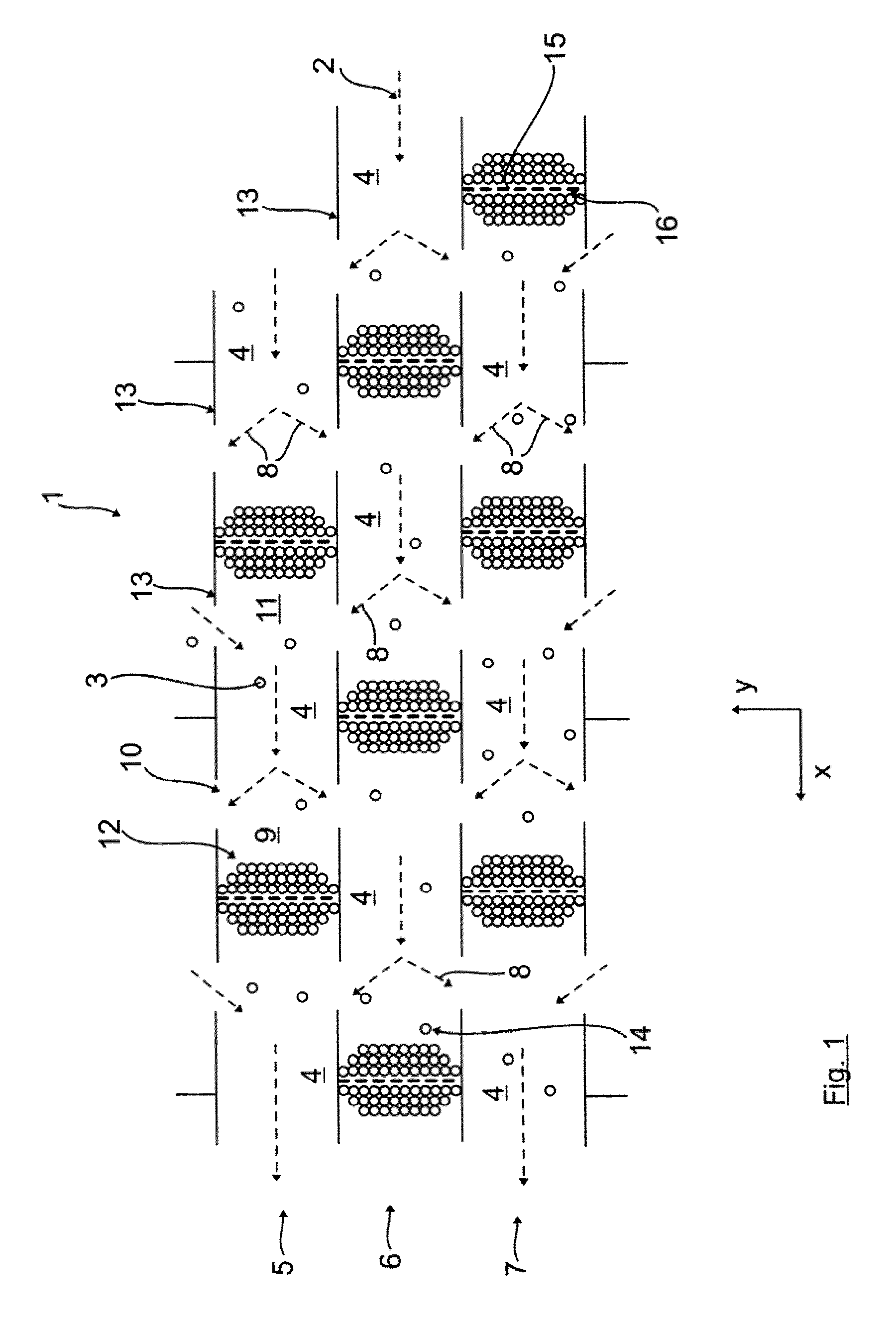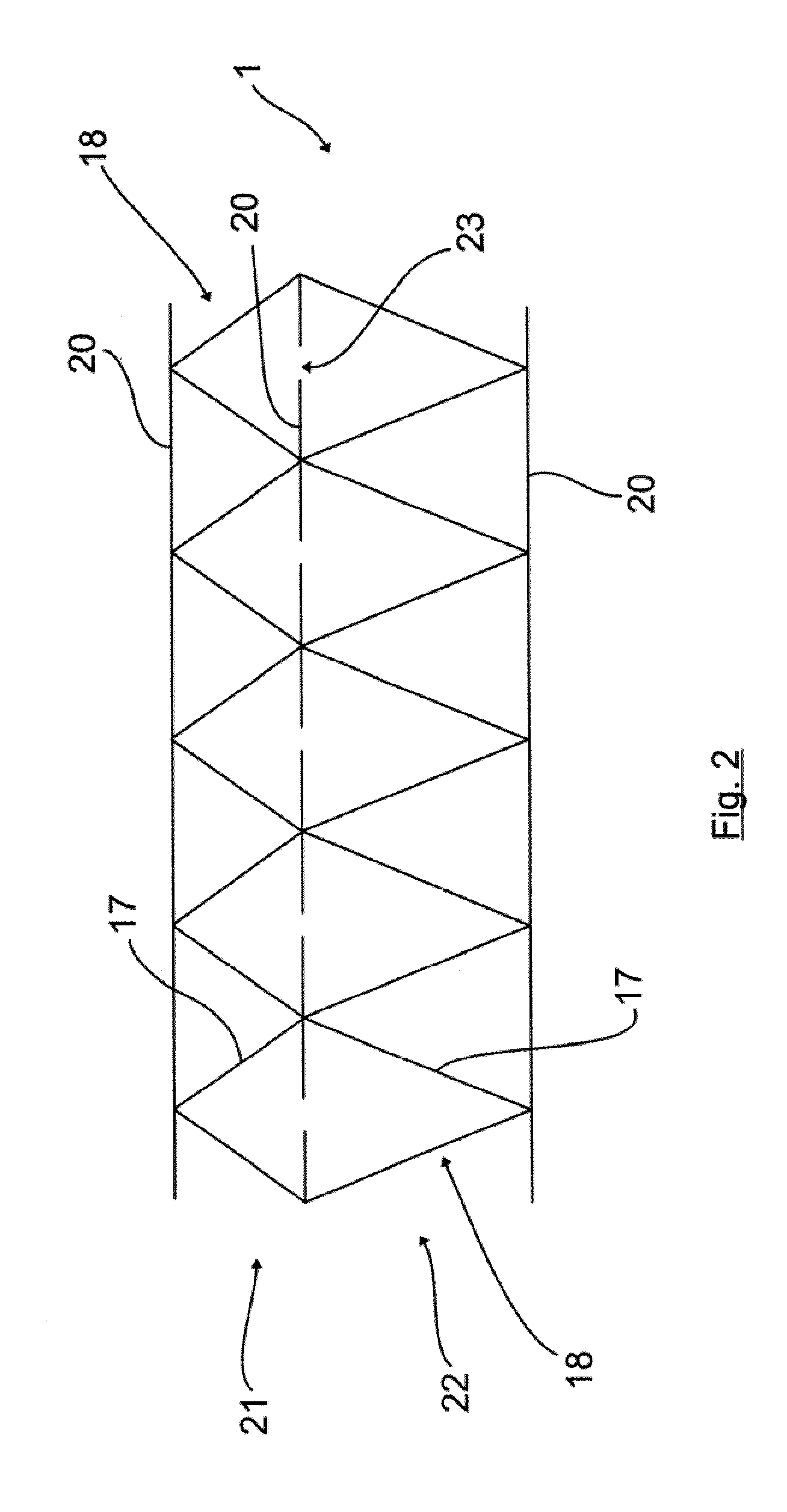Particle Separator and Method for Removing Particles from an Exhaust Gas Stream of an Internal Combustion Engine
a technology of particle separator and exhaust gas stream, which is applied in the direction of separation process, machine/engine, mechanical apparatus, etc., can solve the problems of increased fuel consumption, particle emissions, and high exhaust gas counter pressure caused by filter, and achieve the effect of easy perforation and convenient shap
- Summary
- Abstract
- Description
- Claims
- Application Information
AI Technical Summary
Benefits of technology
Problems solved by technology
Method used
Image
Examples
Embodiment Construction
[0033]Referring now to the drawings in detail, FIG. 1 schematically shows a parallel section through at least a portion of an inventive embodiment of a particle separator 1, and hence is quasi a plan view onto a specific portion of the particle separator 1, illustrating in principle the flow of the exhaust gas stream 2 in conjunction with the separation or removal of, for example, very fine particles 3 out of the exhaust gas stream. The direction of flow x here corresponds to the main direction of flow of the overall exhaust gas stream, regardless of eventual deflections or diversions.
[0034]The particle separator 1 is provided with a plurality of flow cells 4, which are here, by way of example only embodied essentially identically. The flow cells 4 are disposed in a plurality of rows 5,6 and 7 that are arranged next to one another, and are also respectively disposed one after the other. The flow cells 4 of two adjacent rows 5, 6, 7 are offset relative to one another in such a way th...
PUM
| Property | Measurement | Unit |
|---|---|---|
| temperatures | aaaaa | aaaaa |
| temperatures | aaaaa | aaaaa |
| volume | aaaaa | aaaaa |
Abstract
Description
Claims
Application Information
 Login to View More
Login to View More - R&D
- Intellectual Property
- Life Sciences
- Materials
- Tech Scout
- Unparalleled Data Quality
- Higher Quality Content
- 60% Fewer Hallucinations
Browse by: Latest US Patents, China's latest patents, Technical Efficacy Thesaurus, Application Domain, Technology Topic, Popular Technical Reports.
© 2025 PatSnap. All rights reserved.Legal|Privacy policy|Modern Slavery Act Transparency Statement|Sitemap|About US| Contact US: help@patsnap.com



